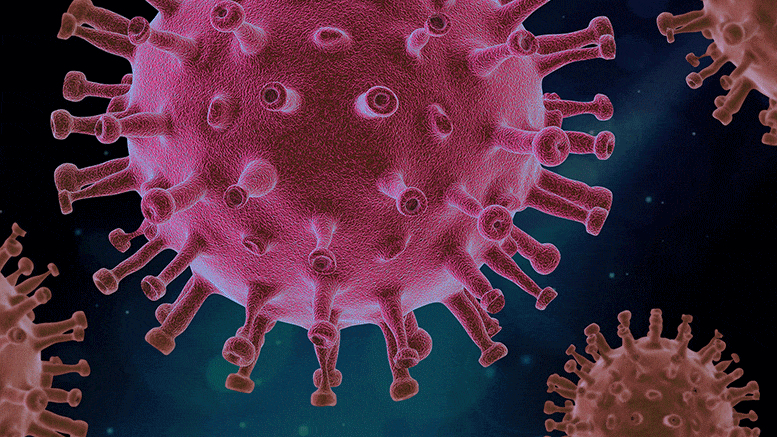Extensive Search for COVID-19 Drugs Finds Promising Compounds Originally Developed for SARS

An extensive search and testing of current drugs and drug-like compounds has revealed compounds previously developed to fight SARS might also work against COVID-19.
Using the National Drug Discovery Centre, researchers from the Walter and Eliza Hall Institute identified drug-like compounds that could block a key coronavirus protein called PLpro. This protein, found in all coronaviruses, is essential for the virus to hijack and multiply within human cells, and disable their anti-viral defenses.
Initially developed as potential treatments for SARS, the compounds prevented the growth of the SARS-CoV-2 virus (which causes COVID-19) in the laboratory.
The discovery, published yesterday in The EMBO Journal, was led by Professor David Komander, Professor Marc Pellegrini, Professor Guillaume Lessene, and Dr. Theresa Klemm.
At a glance
- Australian researchers have identified a molecular target for potential new COVID-19 treatments
- A chemical compound, originally discovered to inhibit SARS, shows promise for halting the growth of the COVID-19 virus (SARS-CoV-2)
- The discoveries were made by leveraging the capabilities of the National Drug Discovery Centre and ANSTO’s Australian Synchrotron, and may underpin the development of new drugs for COVID-19
Targeting a key viral protein
Coronaviruses, including the viruses that cause COVID-19 and SARS, all contain a protein called PLpro, which allows the virus to hijack human cells and disable their anti-viral defenses.
Professor Komander said PLpro belonged to a family of proteins called ‘deubiquitinases’, which his team had studied for the last 15 years in a range of diseases.
“When we looked at how SARS-CoV-2 functions, it became clear that the PLpro deubiquitinase was a key component of the virus — as it is in other coronaviruses, including the SARS-CoV-1 virus, which causes SARS,” he said.
“We quickly established the VirDUB program to investigate how PLpro functions and what it looks like. These are critical first steps towards discovering new drugs that could be potential therapies for COVID-19.”
Using ANSTO’s Australian Synchrotron, the VirDUB team rapidly ascertained how PLpro interacts with human proteins — homing in on a target that could be blocked by new drugs.
Discovering new medicines
The National Drug Discovery Centre was critical to rapidly search for drugs that could block PLpro.
“We scanned thousands of currently listed drugs, as well as thousands of drug-like compounds, to see if they were effective in blocking the SARS-CoV-2 PLpro,” Professor Komander said.
“While existing drugs were not effective in blocking PLpro, we discovered that compounds developed in the last decade against SARS, could prevent the growth of SARS-CoV-2 in pre-clinical testing in the laboratory.”
The next step is to turn these compounds into drugs that could be used to treat COVID-19, Professor Komander said.
“We now need to develop the compounds into medicines, and make sure they are safe for patients.
“Importantly, drugs that are able to inactivate PLpro may be useful not just for COVID-19 but may also work against other coronavirus diseases, as they emerge in the future.”
###
Reference: “Mechanism and inhibition of the papain‐like protease, PLpro, of SARS‐CoV‐2” by Theresa Klemm, Gregor Ebert, Dale J Calleja, Cody C Allison, Lachlan W Richardson, Jonathan P Bernardini, Bernadine GC Lu, Nathan W Kuchel, Christoph Grohmann, Yuri Shibata, Zhong Yan Gan, James P Cooney, Marcel Doerflinger, Amanda E Au, Timothy R Blackmore, Gerbrand J van der Heden van Noort, Paul P Geurink, Huib Ovaa, Janet Newman, Alan Riboldi‐Tunnicliffe, Peter E Czabotar, Jeffrey P Mitchell, Rebecca Feltham, Bernhard C Lechtenberg, Kym N Lowes, Grant Dewson, Marc Pellegrini, Guillaume Lessene and David Komander, 26 August 2020, The EMBO Journal.
DOI: 10.15252/embj.2020106275
DOI: 10.15252/embj.2020106275
The publication in The EMBO Journal research was a multidisciplinary collaboration of research teams at the Walter and Eliza Hall Institute of Medical Research, the National Drug Discovery Centre, ANSTO’s Australian Synchrotron, the Commonwealth Scientific and Industrial Research Organisation (CSIRO), the Oncode Institute and Department of Cell and Chemical Biology (Leiden University, The Netherlands).
The research was funded by Hengyi Pacific Pty Ltd, the Australian National Health and Medical Research Council and Medical Research Future Fund, the Nederlandse Organisatie voor Wetenschappelijk Onderzoek (NWO), and the Victorian Government.
No comments:
Post a Comment